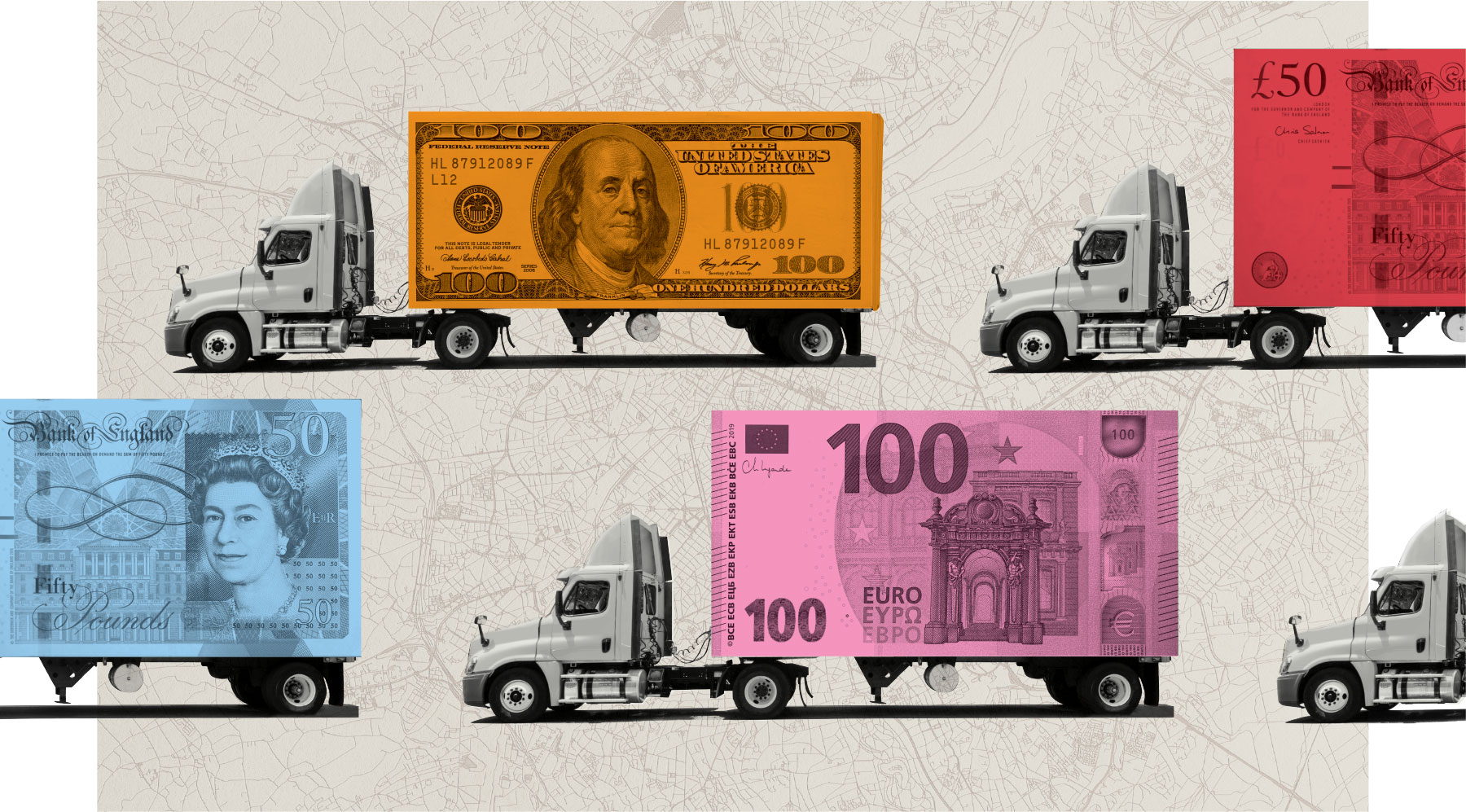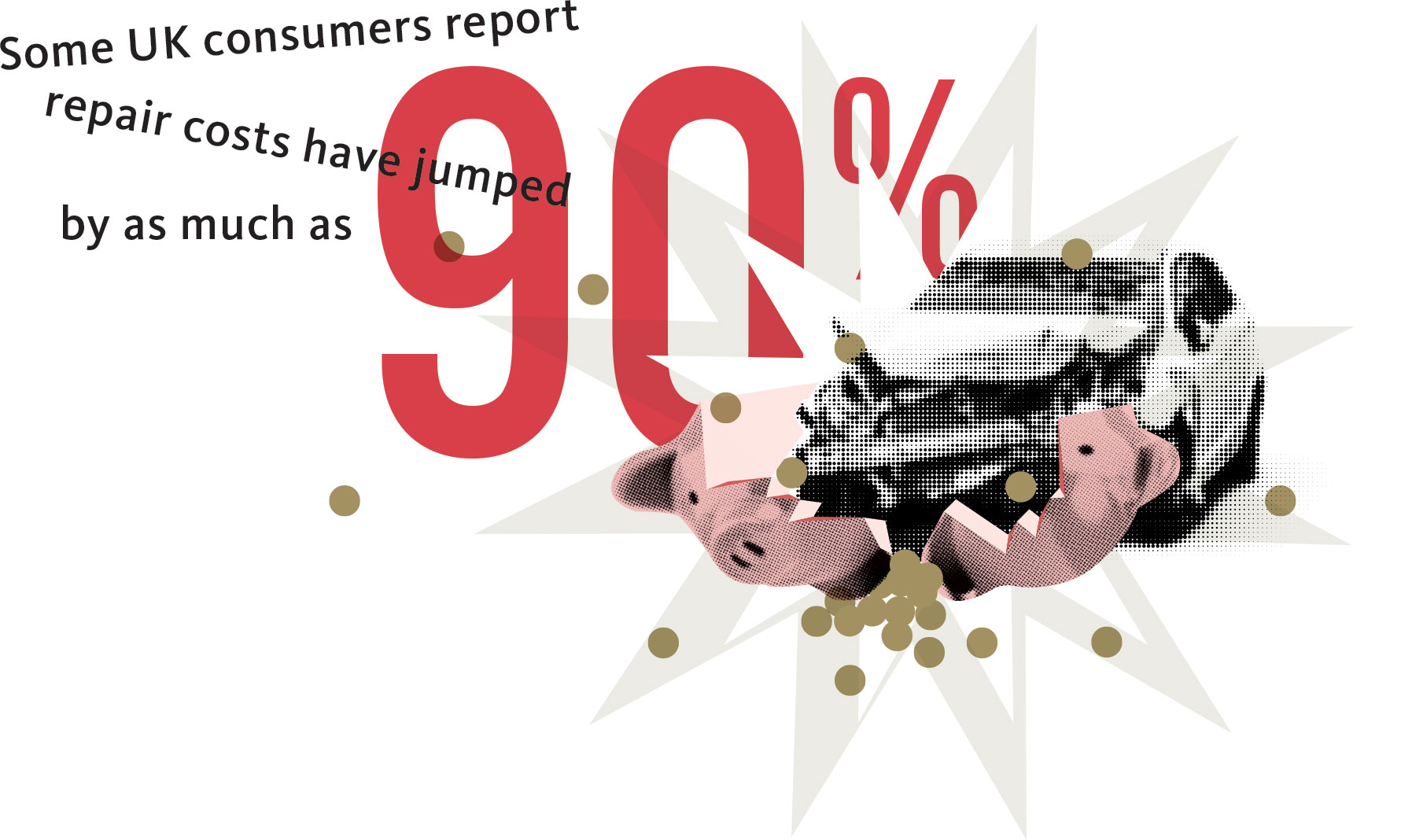CONTRIBUTORS
KYLE DUNLAP
AVP, client services, Sedgwick
MILLY KARLSEN
team leader, motor claims, Sedgwick
The global automotive claims landscape is currently facing a range of significant challenges — the impact of electric vehicles (EVs), talent shortages among commercial drivers and repair technicians, product recalls and in-market remediations, and increased litigation and legal system abuse, to name a few. The issues in the U.S. and Europe share many similarities, but there are some distinct differences between the two markets.
Here, we will explore some of today’s critical pain points in auto and motor claims and what can be done to alleviate them. A look at key trends and solutions adopted by organizations successfully navigating the uncertain road ahead provides real-world insights and practical steps worth considering.
The U.S. market
Perhaps most significant in the U.S. is that the industry saw 10 straight years of underwriting losses prior to 2021. There was a reprieve during the pandemic, when the commercial auto combined loss ratio fell below 100%, but it was short-lived. Claim incidence and costs are rising once again.
There’s a lot more the U.S. auto claims industry needs to tackle, including:
- Nuclear (and now thermonuclear) verdicts. A few years ago, seemingly routine injury cases resulting in multimillion-dollar verdicts and settlements were exceptionally rare. Today, they’ve become all too common. We have entered not just the era of nuclear jury verdicts but the thermonuclear era. Although the trucking industry has long been a favorite target of the plaintiffs’ bar, the landscape has changed significantly over the last 10 years. Personal injury firms are using a variety of novel and increasingly sophisticated tactics, transforming their pursuit of the trucking industry into a science. As a result, settlements and verdicts above $1 million have shot up drastically, and those of $10 million or more have become much more frequent. In 2021, a Florida jury awarded a landmark $1 billion verdict against a trucking firm, signalling that the inflation of vehicle accident settlement amounts may be nearly limitless.
- Social inflation and “but for” arguments. These sky-high settlements underscore how broad public sentiment against corporate entities is creating an environment in which the defense is at a distinct disadvantage. In this age of social inflation, some jurors are determined to take aim at what they see only as a faceless corporation with deep pockets. Attorneys are increasingly shifting focus away from the facts of the incident (for example, who ran the red light) to perceived negligence about equipment maintenance or hiring practices that become the basis of a “but for” argument of direct negligence against the motor carrier. Plaintiff’s counsel will utilize whatever they can to reshape the narrative and put the motor carrier and its business practices on trial. These claims are also costly to defend — requiring extensive data, monitoring equipment, research and analysis to build a viable defense.
- Experienced driver shortages. Between the continued growth of online shopping, increasing demand as supply chain problems settle, the retirement of many seasoned truckers, and fewer young people interested in life on the road, there is a tremendous need for experienced and qualified drivers. The industry is working to improve recruitment, but the efforts thus far still lag behind the level of demand. As a result, motor carriers are increasingly left with little choice other than to place marginally acceptable drivers behind the wheel. This predicament provides easy fodder for plaintiffs and significant challenges for the defense when these drivers are involved in accidents. More generous pay and benefit programs, incentives for safe driving and new technologies continue to improve drivers’ performance, but this must remain an area of focus for the transportation industry.
- Tort reform. The auto insurance industry has been pushing for tort reform for years. Multiple practices are being targeted, including third party litigation funding (TPLF). Among the troubling aspects of TPLF is that it encourages plaintiffs to file frivolous suits and leads to inflated medical costs, settlements and trial demands, while emboldening plaintiffs to seek medically unnecessary treatments and surgical procedures. One conservative estimate puts the price tag for TPLF at $5 billion. Some states, including Arkansas, Maine, Nebraska and Oklahoma, are beginning to turn the tide against TPLF by focusing on issues of transparency and consumer protection. There’s still much to be done, but reforms like these are showing promise.
- Inflated medical costs. In many auto-related claims, the pricing of medical services is not reflective of reasonable and customary costs. Inflated medical costs often go along with TPLF. Another practice fueling higher prices is letters of protection, where a provider won’t charge for medical services upfront but instead recoups their costs after a claim is settled. The courts are starting to take notice. A Florida judge recently ruled that a defendant would not be liable for the total of all medical bills and would be responsible only for the amount paid by Medicare. The amount billed by the plaintiff’s provider was $500,000 but was reduced to $60,000.

The market in Europe
The European motor claims market is also facing unprecedented pressures. Some are related to the two-sided coin that is the rising popularity of electric vehicles. On the positive side, Europe has done much better than the U.S. in building the infrastructure needed to support EV usage and promoting its environmentally-friendly benefits. Countries like Norway have offered attractive incentives and built numerous charging stations — even in rural areas — to make driving an EV a convenient, safe and attractive option. On the negative side, EVs are estimated to increase accident risks by 25%.
Several other factors affecting the motor claims arena in Europe include:
- Rising repair rates. With the adoption of EVs comes new challenges associated with repairing them. In Norway, for example, almost 30% of all privately-owned vehicles are electric or chargeable hybrid, and nearly two of every three cars sold there now are electric. Much of Europe is seeing greater use of electrically-powered buses, vans and other commercial vehicles. Evolving vehicle technology, combined with supply chain issues and labor shortages, have driven up the cost of repairs. Norway saw its total number of reported car repairs increase by 6% from 2021 to 2022, but the cost of repairs during that time increased by 13%. The UK has experienced even higher prices. “Figures from the Office for National Statistics show the cost of running and maintaining personal transport, including cars, has increased by 15% compared with a year ago, above the overall inflation rate of 10.1%,” The Guardian said in late 2022. Some UK consumers report repair costs have jumped by as much as 90%.
- Increase in traffic and accidents. In the aftermath of COVID, Europeans are now driving longer distances. Several factors are fueling the growth. While Europe has enjoyed a robust public transportation offering for years, the pandemic significantly curbed its use as people grew accustomed to private automobile transportation. This past summer, many Europeans opted to drive rather than fly to their vacation destinations. The result of this increase in road travel is, inevitably, more accidents. Additionally, insurers are seeing more accident reports from policyholders from foreign countries, adding cost and regulatory complexity to many claims.
- More small motor claims. Accident-related injury claims are down due to more robust vehicle safety features, but numbers are climbing higher on low-value motor claims. Many such claims are related to parking incidents and other minor accidents. One factor that may be contributing is modern vehicles’ large dashboard display screens (especially in EVs) leading to more distracted driving. More experience in driving EVs and improvements in design features will hopefully help to turn the tide.
- Sharing the road with other motorized vehicles. European countries are seeing an increase in other motorized vehicles, such as electric scooters, on their roadways. Rising figures for accidents and costs are following suit. Some countries, including Norway, Germany and France, are adapting. For example, as of Jan. 1, 2023, drivers of e-scooters in Norway must have liability insurance. The law applies to all privately owned vehicles, including those that can be shared via an app. The UK does not currently require such coverage.
- Claims fraud. As expected during periods of economic pressure, there has been a surge in global insurance fraud over the past few years. Many areas are seeing more claims filed with reports of escalated and pre-existing damages. The “exploitation of actual loss” accounted for 27.2% of all motor vehicle fraud cases in Norway in 2020, with similar rates expected for 2023. Beyond concerns regarding individual claims are widespread increases in organized crime rings. The BBC reported that, over a two-year period, up to 170,000 claims were linked to suspected “crash for cash” networks.

Global trends
While there are distinct regional differences, some factors are proving true around the world. For instance, like Europe, the U.S. and Asia have seen sharp increases in claims fraud and more accidents involving electric vehicles.
Additionally, automotive recalls remain an issue worldwide. In the U.S., the National Traffic Safety Administration issued 300 vehicle recalls for safety-related issues in 2022, with Europe reporting similar numbers. While recalls are down slightly in the first half of 2023, the number of impacted units in the U.S. rose 8% in the second quarter of the year. Regulators, legislators and consumers continue to focus on the recent increase in vehicle thefts and to what extent manufacturers are responsible for addressing shortcomings with anti-theft devices. (For more, see sedgwick.com/brandprotection.)
The price of repairs for EVs — particularly those with under-mounted batteries — remains high. And while supply chain issues are improving, they continue to vex manufacturers, consumers and insurers. Carriers are concerned at the high cost of covering rental cars for damaged vehicles while waiting for EV parts and service.
Addressing pain points with proven solutions
The industry is facing a complicated range of issues, but tackling these global pain points is not only feasible — it’s happening. Many service providers (including Sedgwick) are turning to automated solutions to handle small claims, like damage to glass or parking accidents. Further, our motor team in Norway is finding that streamlined and highly personalized services are helping to manage claim costs and minimize opportunities for fraud.
Other strategies are proving successful as well. These include embracing and leveraging claims technology, deploying rapid response teams, knowing the attorneys and jurisdictional particulars on litigated claims, and investing in investigations.
The value of specialization and experienced partners
As highlighted in edge 21, today’s complex business challenges require specialized expertise and a network of partners with a breadth and depth of resources and experience. The auto/motor claims marketplace is no exception.
The industry is moving away from a multi-line adjustment model and demanding greater specialization in high-frequency and costly, complex claims. Industry experts believe this strategy is vital to effective auto and motor claims handling, as is specialization between first- and third-party exposures (for example, liability, physical damage and cargo).
Transportation companies, automotive manufacturers and insurance carriers will be well served to seek out partners with strong commercial auto and transportation practice groups, as well as a deep understanding of the essential challenges and issues facing the industry today. Depending on their needs, specializations like major case units, brand protection, multinational expertise and mono-line focus areas may also be essential.
The marketplace will likely continue to be volatile and uncertain, but understanding the issues and adopting proven strategies will help carriers, fleet managers and other organizations adapt and succeed — regardless of the road ahead.
